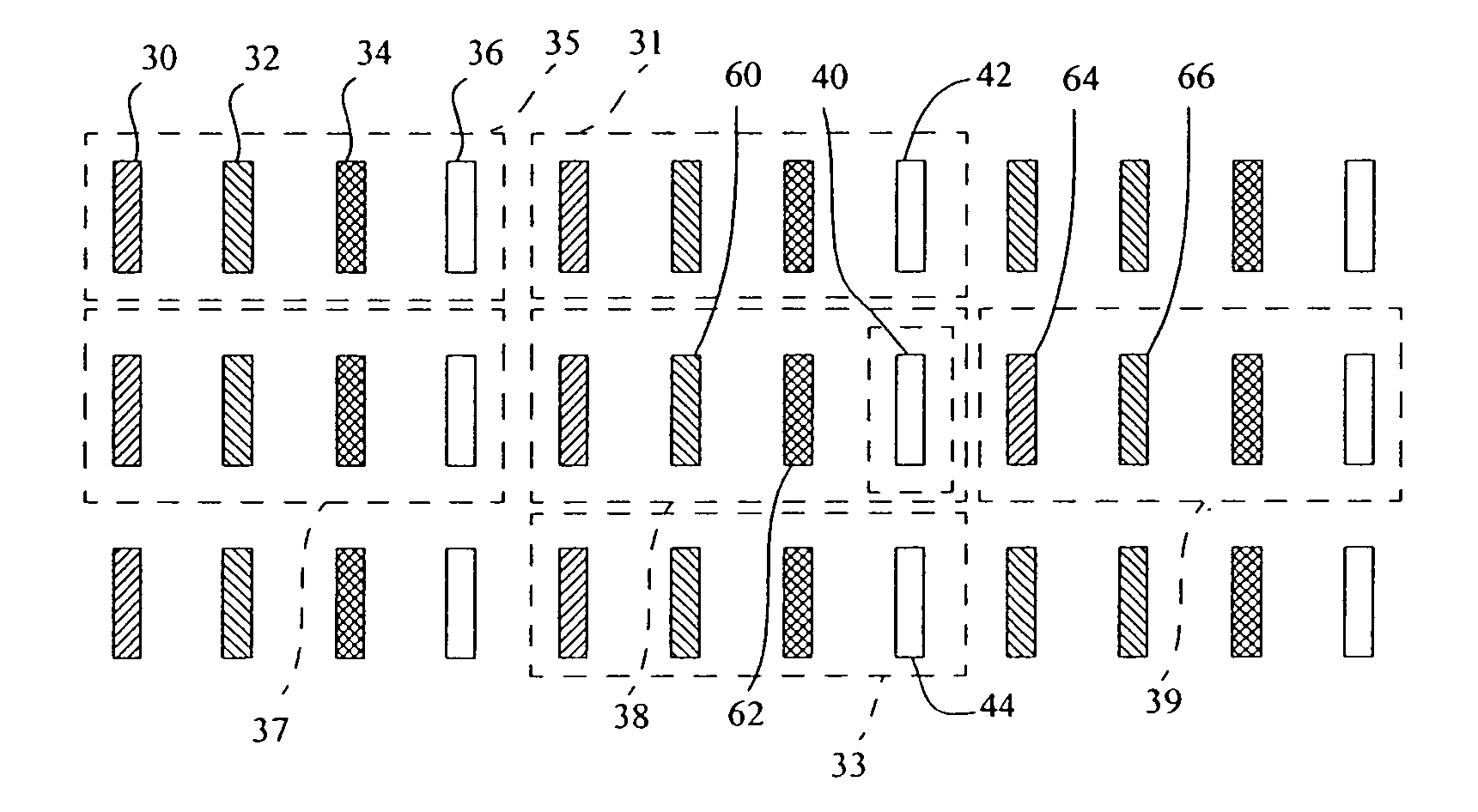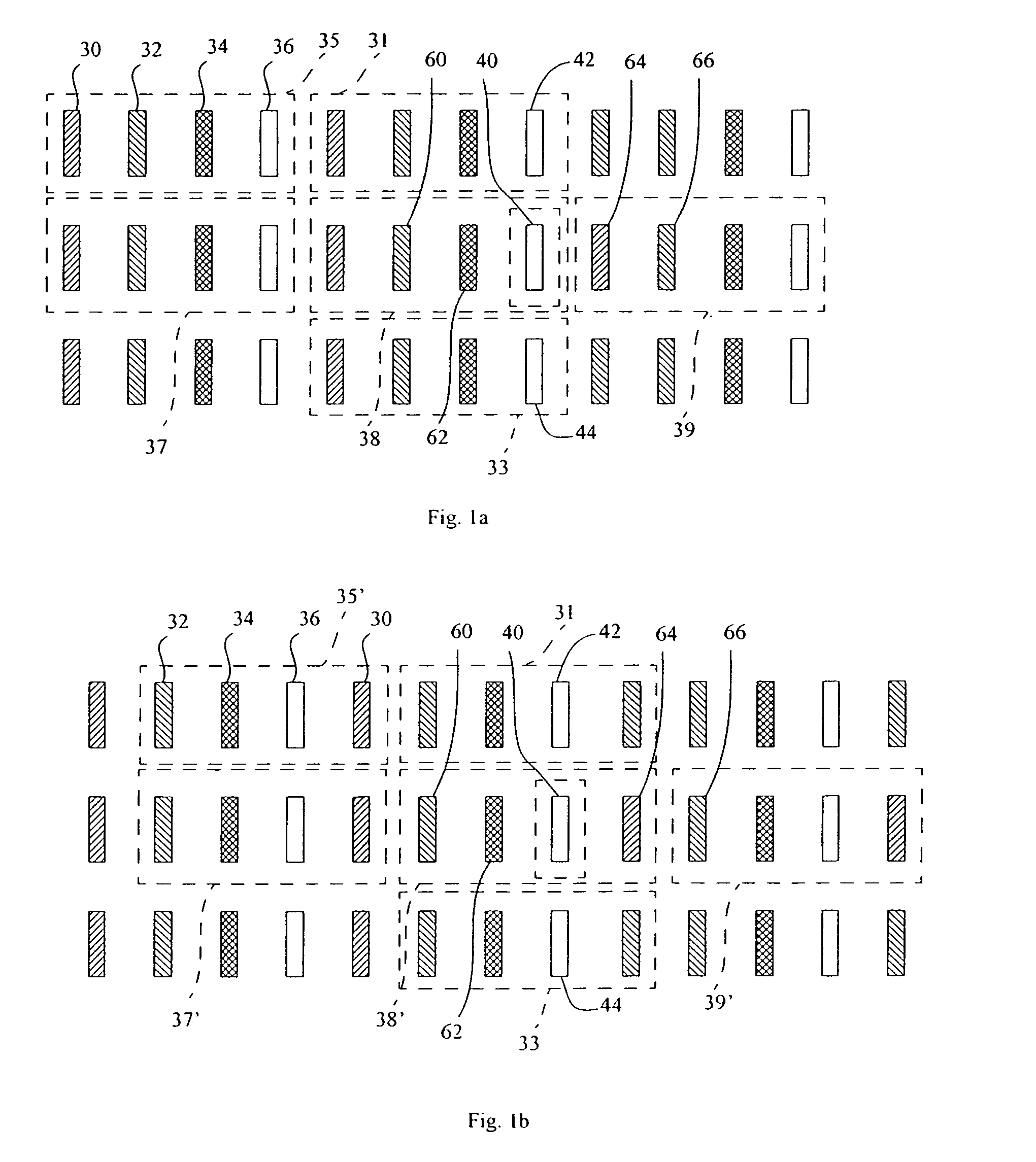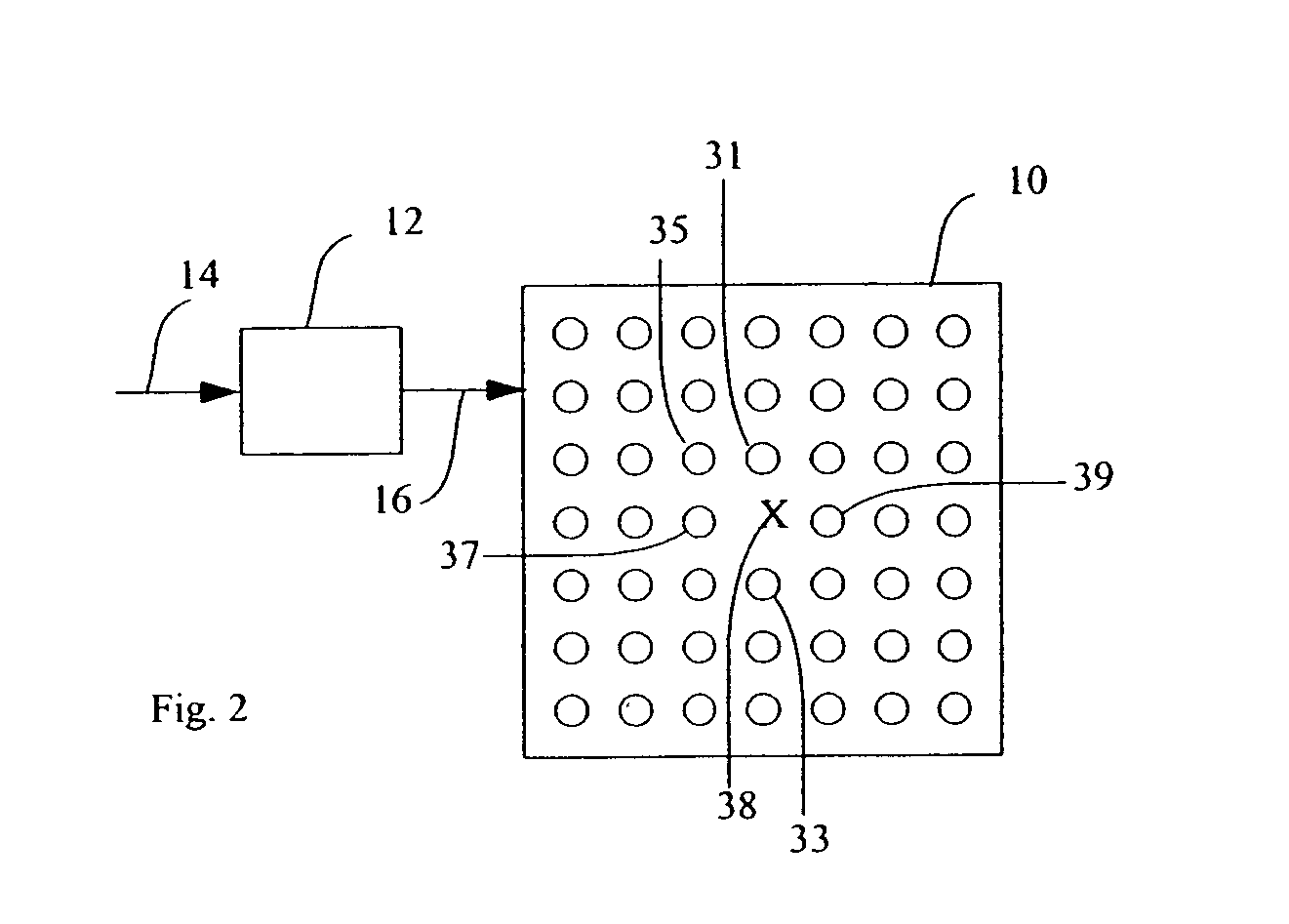Method and apparatus for defect correction in a display
a technology for defect correction and display, applied in the field of displays, can solve the problems of display defect correction, display defect correction, display defect correction, etc., and achieve the effects of improving manufacturing yield, improving power efficiency, and improving uniformity and quality
- Summary
- Abstract
- Description
- Claims
- Application Information
AI Technical Summary
Problems solved by technology
Method used
Image
Examples
Embodiment Construction
[0018] Referring to FIG. 1a, in an embodiment of the present invention, a full-color display device comprises a display having a plurality of sub-pixels (e.g., 30, 32, 34, 36, 40, 42, 44, 60, 62, 64, and 66) formed in rows in a first dimension and grouped into pixels (e.g., 31, 33, 35, 37, 38, and 39) within each row, each pixel including at least three color sub-pixels (e.g. red 30, 64, green 32, 60, and blue 34, 62) forming a color gamut and at least one additional sub-pixel (e.g. 36, 40, 42, 44) having a color within the gamut and an efficiency higher than at least one of the color sub-pixels wherein at least one pixel (e.g., 38) is defective and comprises one defective additional in-gamut sub-pixel (e.g., 40). Referring to FIG. 2, a controller 12 for driving the display 10 pixels and for transforming an input signal 14 into a compensated signal 16 for selectively modifying the output of at least one color sub-pixel in the defective pixel 38, at least one other, but not all, of t...
PUM
 Login to View More
Login to View More Abstract
Description
Claims
Application Information
 Login to View More
Login to View More - R&D
- Intellectual Property
- Life Sciences
- Materials
- Tech Scout
- Unparalleled Data Quality
- Higher Quality Content
- 60% Fewer Hallucinations
Browse by: Latest US Patents, China's latest patents, Technical Efficacy Thesaurus, Application Domain, Technology Topic, Popular Technical Reports.
© 2025 PatSnap. All rights reserved.Legal|Privacy policy|Modern Slavery Act Transparency Statement|Sitemap|About US| Contact US: help@patsnap.com



